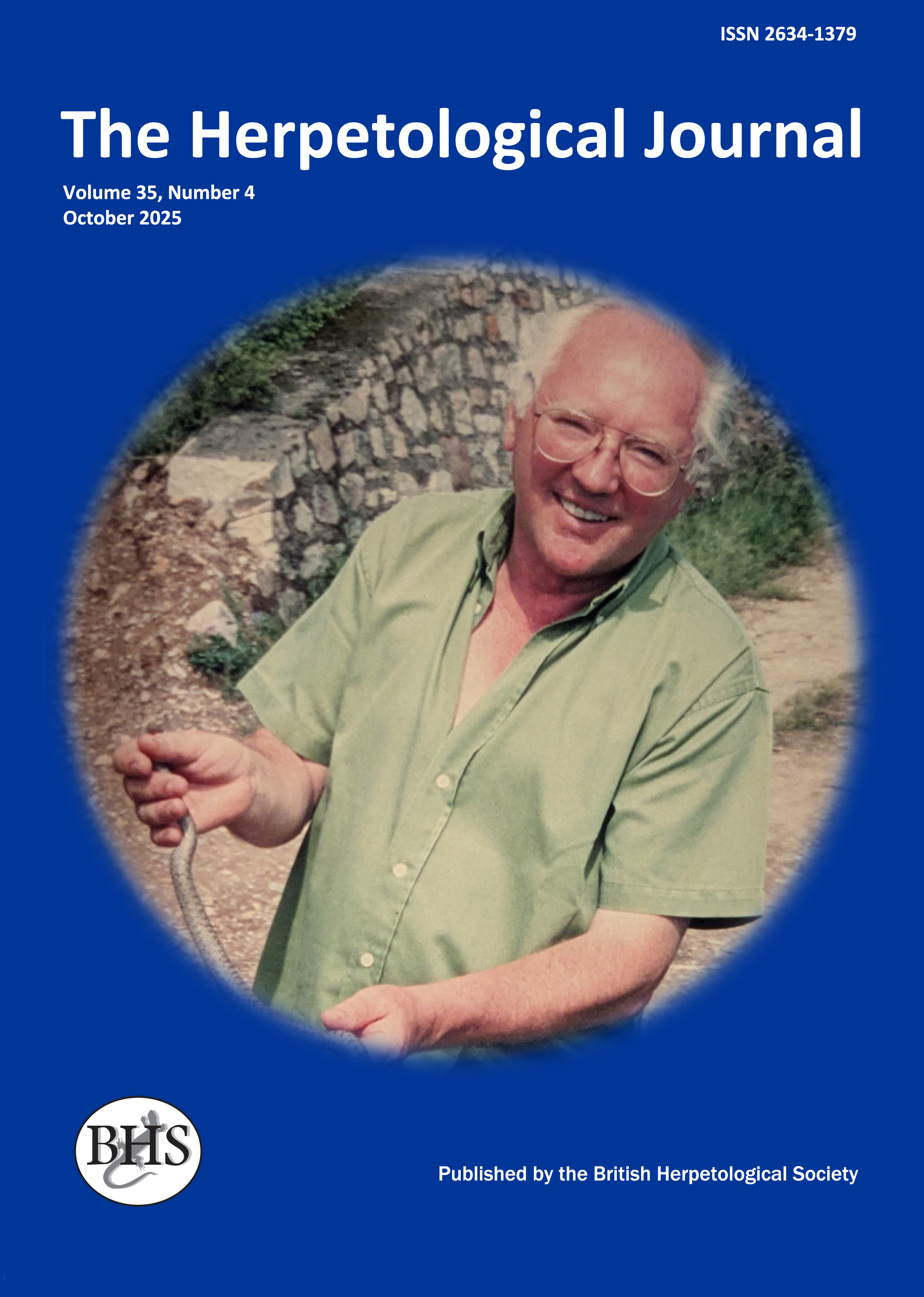
The Herpetological Journal
The Herpetological Journal is the Society's prestigious quarterly scientific journal. Articles are listed in Biological Abstracts, Current Awareness in Biological Sciences,Current Contents, Science Citation Index, and Zoological Record.
ISSN 0268-0130
2021 Impact Factor from Clarivate for the Herpetological Journal is 1.194, an increase of 0.332 from 2020.
pdf 07. Food habits, ontogenetic dietary partitioning and observations of foraging behaviour of Morelet's crocodile (Crocodylus moreletii) in northern Belize
1981 downloads
Open Access
pp. 281-290
Authors: Platt, Steven G.; Rainwater, Thomas R.; Finger, Adam G.; Thorbjarnarson, John B.; Anderson, Todd A. & McMurry, Scott T.
Abstract: We studied the food habits and size-related dietary patterns of Morelet's crocodile (Crocodylus moreletii) in freshwater wetlands of northern Belize (1992–2000). Crocodiles (n=420) were classified as hatchlings, small juveniles, large juveniles, subadults or adults based on total length. Stomach contents were obtained primarily by stomach flushing. Prey items included aquatic and terrestrial insects, arachnids, aquatic gastropods, crustaceans, fish, amphibians, reptiles, birds, and mammals. Based on the percent occurrence of recovered prey items, we concluded that the smallest size classes feed largely on insects and arachnids. Large juveniles broadened their diet to include aquatic gastropods, crustaceans, fish and non-fish vertebrates. Insect and arachnid consumption declined sharply among subadults, and increasing amounts of aquatic gastropods and fish were recovered from this size class. The adult diet consisted mainly of aquatic gastropods, fish and crustaceans. Dietary diversity was greatest among large juveniles and subadults. Conversely, hatchlings and small juveniles had the most specialized (least diverse) diet owing to a reliance on insects and arachnids. Dietary overlap was greatest between adjacent size classes, and lowest between the smallest and largest size classes. We also provide field observations of prey-specific foraging behaviours.
Keywords: ONTOGENETIC DIETARY CHANGE, CROCODILE, FORAGING ECOLOGY, STOMACH FLUSHING

